By the time my last day of work came, it had been a whirlwind of a 2024 already. The weeks before Christmas flew by and before Victor and I knew it, we were in the Big Easy, New Orleans, to celebrate Christmas and the New Year with my family. Never mind the fact that we had a massive trip coming up early on in the new year. January 1st arrived quickly and so we hopped back on our transatlantic flight to London. We arrived at Heathrow at 6am, went straight home, logged onto our work laptop and proceeded to have a crazy week. The reason it was so crazy came down to a few factors: (i) I quit my job and my last day of work was Friday, 5 January, (ii) Victor and I had our flights booked to Ho Chi Minh City on Saturday, 6 January, for a 5-week adventure in Southeast Asia, and (iii) I care too much about both of these things so I basically worked myself to the bone to make my handover impeccable and my trip itinerary nailed down to a T.


In all the chaos, amongst booking flights, trains, etc., I somehow had forgotten to check whether I needed a visa to go to Vietnam. We checked Victor’s situation and turns out Spain is visa exempt. When we looked at Portugal for me, I wasn’t so lucky. Being Tuesday evening, I quickly applied for my e-visa. On Thursday, I realised that it was going to be practically impossible for me to get my e-visa in time for Saturday morning. I had to frantically research how to rush my visa and determined that it would be impossible because my port of entry, HCMC, wasn’t listed on any of these third-party service websites. I messaged a third party about what to do and they advised me that an e-visa would be impossible now, I would only be able to get a visa on arrival. I paid for a one-day service so that my visa letter would be ready by midday on Friday. And sure enough, it came in 1 hour before their stated deadline. Feeling a great sense of relief, I was motivated to finish packing.
On Saturday morning, we got up, showered, had breakfast, and made our way to Heathrow. The flight was long, being 12 hours, but it was pleasant enough. Vietnam Airways is a nice airline and there were a lot of nice features, like hot wet towels to wash your hands while sitting, and meals that were definitely above average. The flight was full of Australians, I guess using HCMC as a layover, but this also meant there were many crying and screaming Australian children who obviously had visited the UK to visit Grandma and Grandpa for Christmas. Things went relatively smoothly until we landed at HCMC. The visa process was a really stressful situation as I didn’t know what to do and every attendant I asked completely ignored me. We then got into the long customs line and I started to calm down. While the line took over 30 minutes, it gave me a chance to breathe in and out and recover.

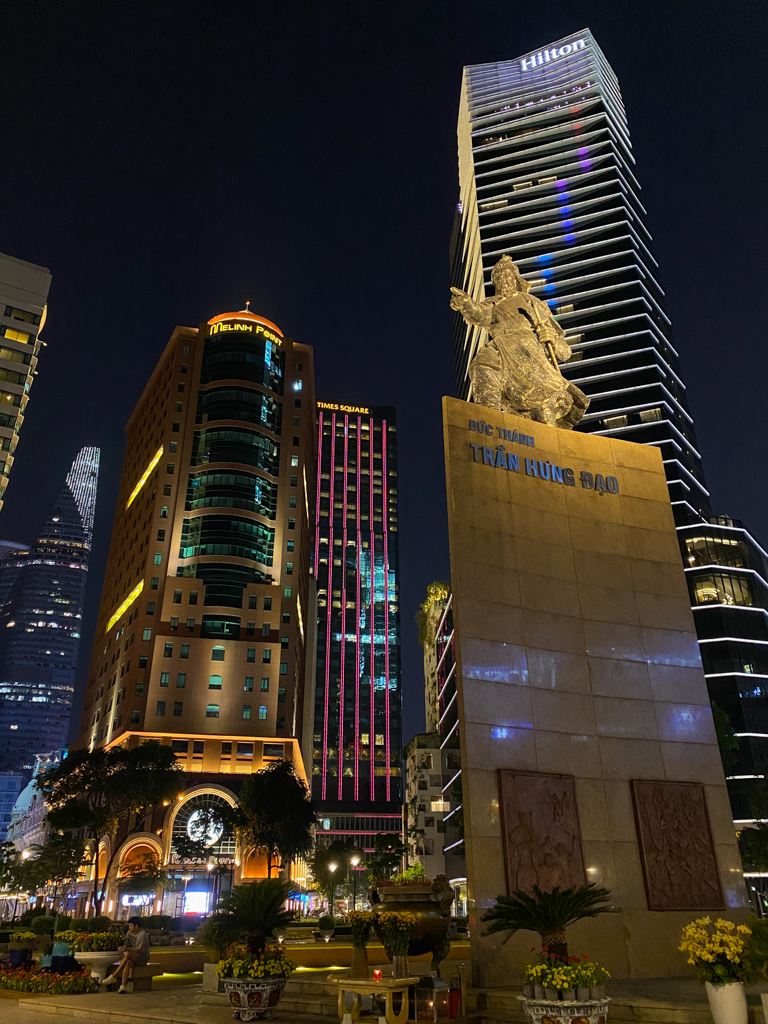
Once we went through customs and picked up our backpacks, we ordered a Grab and quickly made it to our accommodation, Amango Home. Well, except when we entered the woman said, “Hm, maybe try the other one”. She gestured to her right, indicating another building owned by them. We walked over there and it turns out Amango has a hostel and a home. We knew we had booked the ‘Home’ but we just went along as it looked like there was a reception desk at the hostel. However, once the receptionist realized that we were indeed at the Home, profusely apologized. We laughed because it was apparent that our appearance gave her the impression that we must be backpackers and therefore must be staying at the Hostel. Nope! Never again! Our room wasn’t ready yet, so we dropped off our luggage and went on some errands. We needed cash and a SIM card. We ended up spending the whole morning dealing with this for various reasons, but here’s what we learned: (i) MB Bank is great for ATM withdrawals, and (ii) we should’ve just bought our Vietnamese SIM card at the airport.

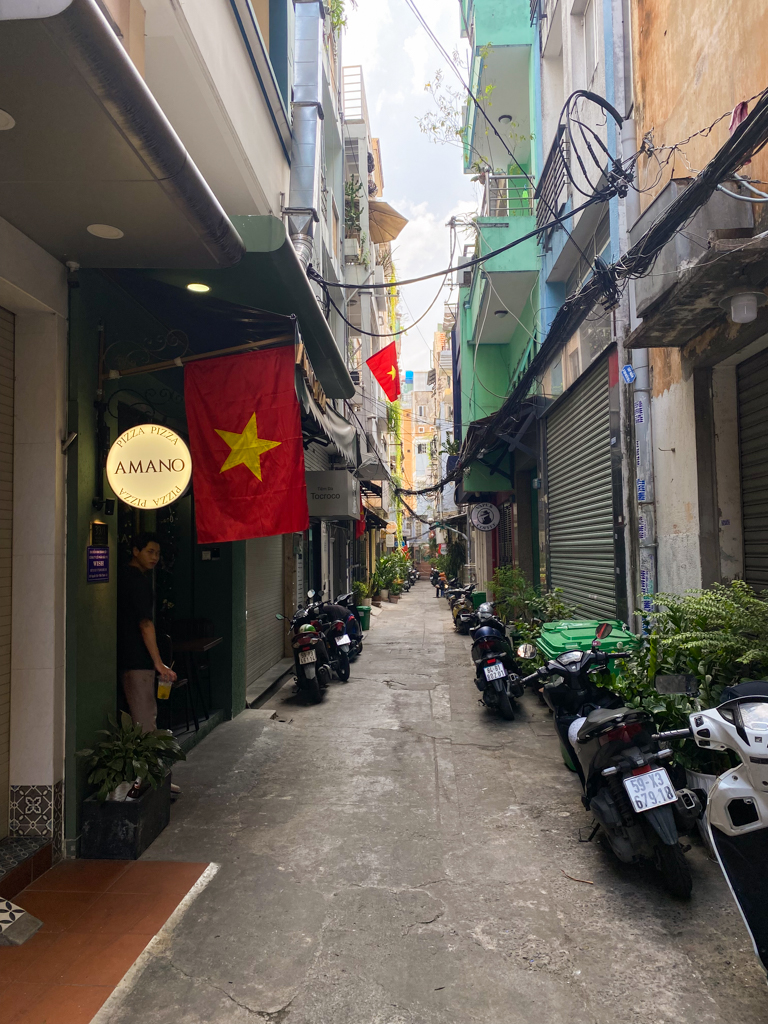
Once we finished our errands, it was time for a coffee. Vietnamese coffee is quite a different world from the one I exist in, being the world of espresso-based drinks, or Americanos. I first learned about Vietnamese coffee in Panama, on a tour of a coffee farm in Boquete. The owner explained that Vietnam is the second largest producer of coffee in the world, but only Robusta coffee. As James Hoffmann wrote in his book The World Atlas of Coffee, even though Robusta is much cheaper to produce, “There is an inevitable downside, however: it doesn’t taste very good”. And because of that fact, the coffee in Vietnam is boosted with sugar. The classic cup of Vietnamese coffee is called cà phê đen. Coarsely ground beans go into a French drip filter (called a phin), which sits on top of the cup. The beans are weighted down with a thin lid, hot water is added to the phin, and then the water slowly trickles through into a cup. This makes for a very bitter cup of coffee, so most people (pretty much everyone) prefer the coffee with sweetened condensed milk, called cà phê sữa nóng for hot or cà phê sữa đá for iced. I figured out that I preferred iced coffee pretty quickly, but I also discovered so many other coffee drinks in Vietnam. More on those drinks later, in another post!
We ended up going to a really good coffee shop called Tonkin Garden Coffee & Eatery. They offered both traditional Vietnamese coffee and other types of brews, including espresso-based drinks and cold brew. I ordered an espresso poured on sweetened condensed milk, a kind of hybrid. I was worried that the sweetened condensed milk was going to make the coffee essentially a dessert, but they put just the right amount.


For lunch, we went to Hủ tiếu dê kho SGC. It’s a beautiful family-style bistro that feels like you’re stepping back in time to old Saigon. The most famous thing here is actually made of meat, pate chaud. I tried some of the flaky pastry and it was quite yummy! After lunch, we went back to our accommodation to check in, pay, and take a well-deserved nap.
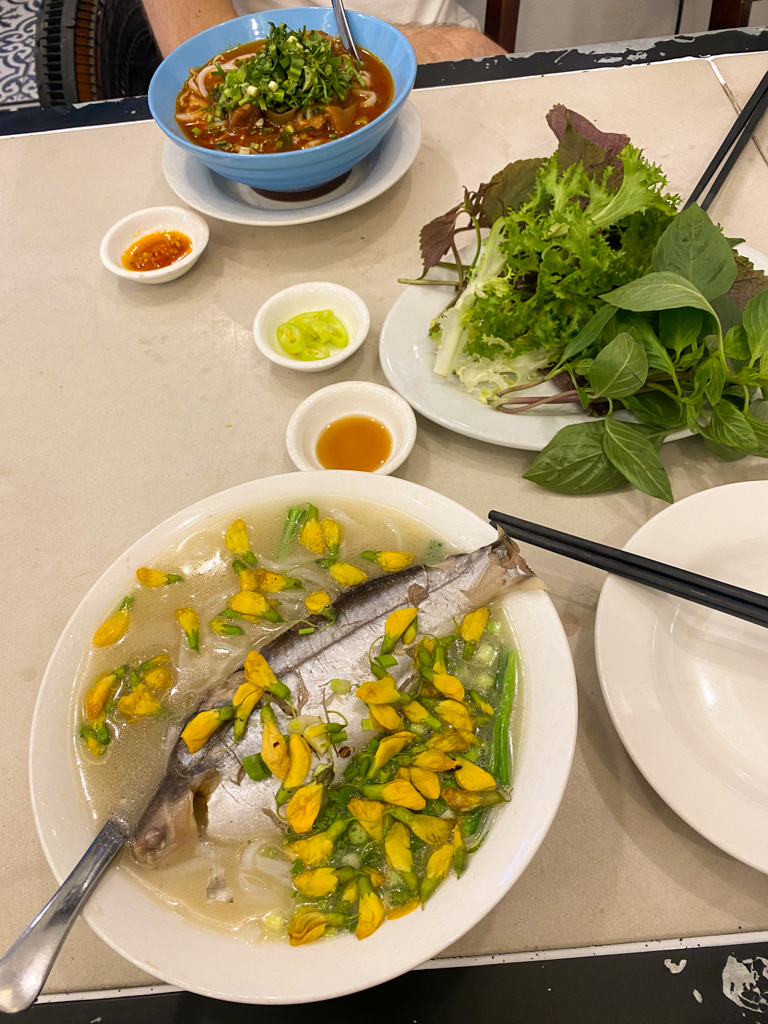
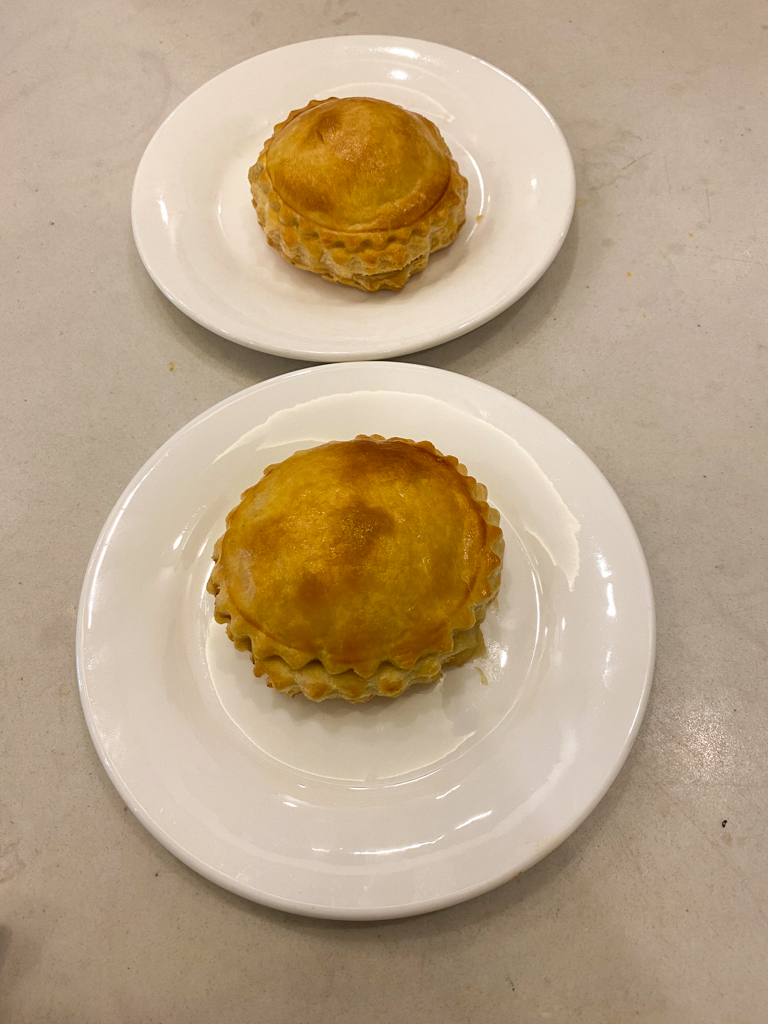
At 5:00pm we ventured back out as dusk approached. We walked to Nguyen Hue Street, which is a wide street with a pedestrianised avenue down the middle. It starts at the building holding the People’s Committee of Ho Chi Minh City and ends at the river. It’s a delightful spot.
 We then continued walking through District 1, passing the Ben Thanh Market until we reached another pedestrianised street, the Bui Vien Walking Street.
We then continued walking through District 1, passing the Ben Thanh Market until we reached another pedestrianised street, the Bui Vien Walking Street.
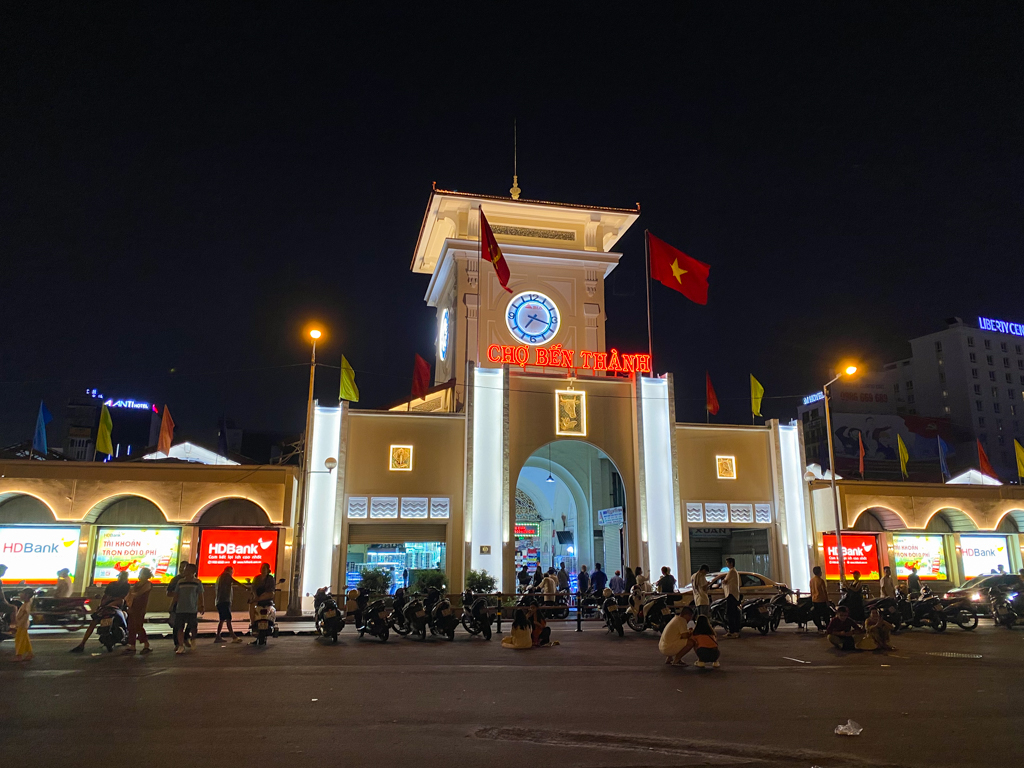
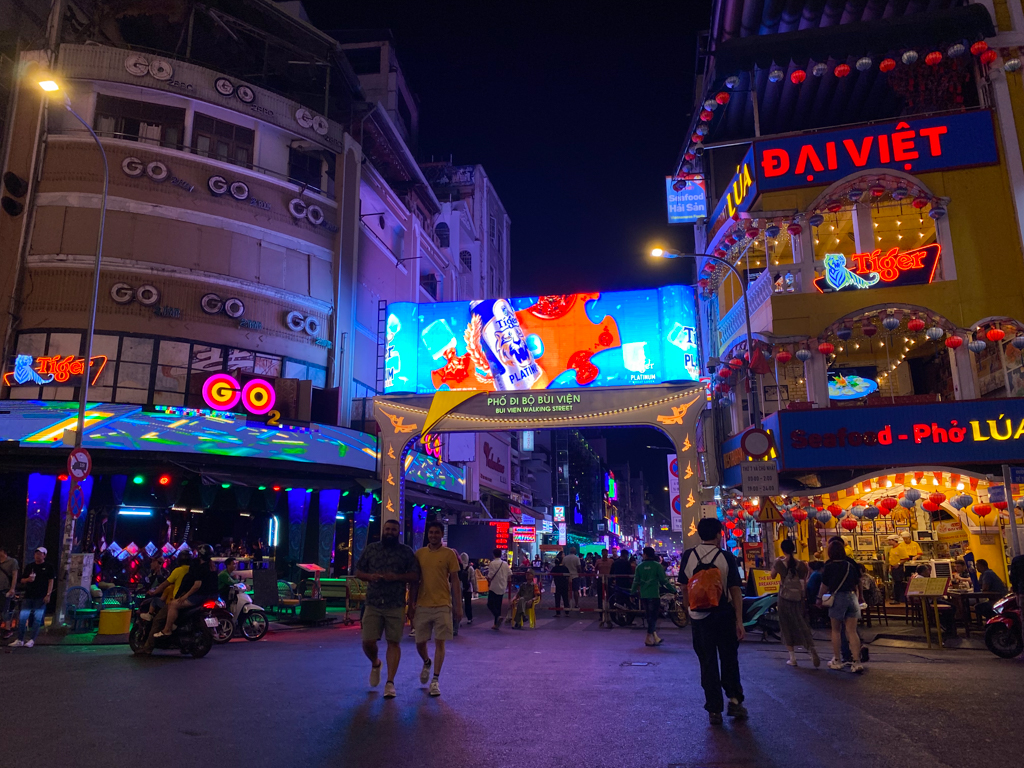 For dinner, we went to a cơm tấm place called Cơm tấm Đề Thám, essentially a little cart with an alleyway for seating. Cơm tấm is a dish made from rice with fractured rice grains. There is a common metaphorical saying in Vietnam: “Saigon people eat Com Tam like Ha Noi people eat Pho”. Meaning, cơm tấm is incredibly comforting and popular. The rice is often served with chargrilled caramelised pork chops, shredded pork skin, and steamed egg meatloaf, but there are many versions of the dish. Victor got rice served with a fried egg and grilled pork ribs, and another plate with rice and chicken. This is probably one dish I would’ve liked to have tried to find again, as I know rice can be served with shrimp or fish as well (so I can gobble it up!).
For dinner, we went to a cơm tấm place called Cơm tấm Đề Thám, essentially a little cart with an alleyway for seating. Cơm tấm is a dish made from rice with fractured rice grains. There is a common metaphorical saying in Vietnam: “Saigon people eat Com Tam like Ha Noi people eat Pho”. Meaning, cơm tấm is incredibly comforting and popular. The rice is often served with chargrilled caramelised pork chops, shredded pork skin, and steamed egg meatloaf, but there are many versions of the dish. Victor got rice served with a fried egg and grilled pork ribs, and another plate with rice and chicken. This is probably one dish I would’ve liked to have tried to find again, as I know rice can be served with shrimp or fish as well (so I can gobble it up!).
 The next morning, I woke up at 4am, clearly suffering from jet lag. To pass the time I spent a good hour researching the mosquito situation in the Mekong Delta region. I read that mosquitos are more of a problem during the rainy season, being May to November, because the small puddles of water left after it rains are a breeding ground for mosquitos. We had packed two bottles of 50% DEET bug spray with us, so I was feeling relatively okay with delving into the mosquito kingdom.
The next morning, I woke up at 4am, clearly suffering from jet lag. To pass the time I spent a good hour researching the mosquito situation in the Mekong Delta region. I read that mosquitos are more of a problem during the rainy season, being May to November, because the small puddles of water left after it rains are a breeding ground for mosquitos. We had packed two bottles of 50% DEET bug spray with us, so I was feeling relatively okay with delving into the mosquito kingdom.
We properly woke up at 6:30am, got ready, and walked to breakfast at a place called Hủ tiếu mì Bùi Chu in District 1. They serve a dish called hủ tiếu, as the name of the place hints at. Hủ tiếu is incredibly popular in HCMC, often served for breakfast. It’s essentially a noodle soup, though it can be served with broth or dry (with the option of having the broth on the side). The broth is often made of pork bones, dried squid and dried shrimp. During my research, I learned that the broth in Southern Vietnam tends to be a bit sweeter compared to the North. There are different types of noodles for hủ tiếu, such as soft rice noodles, egg noodles, or chewy tapioca noodles. Victor and I both chose rice vermicelli noodles, and I got mine with fish and Victor got mixed meat. The broth was absolutely delicious.

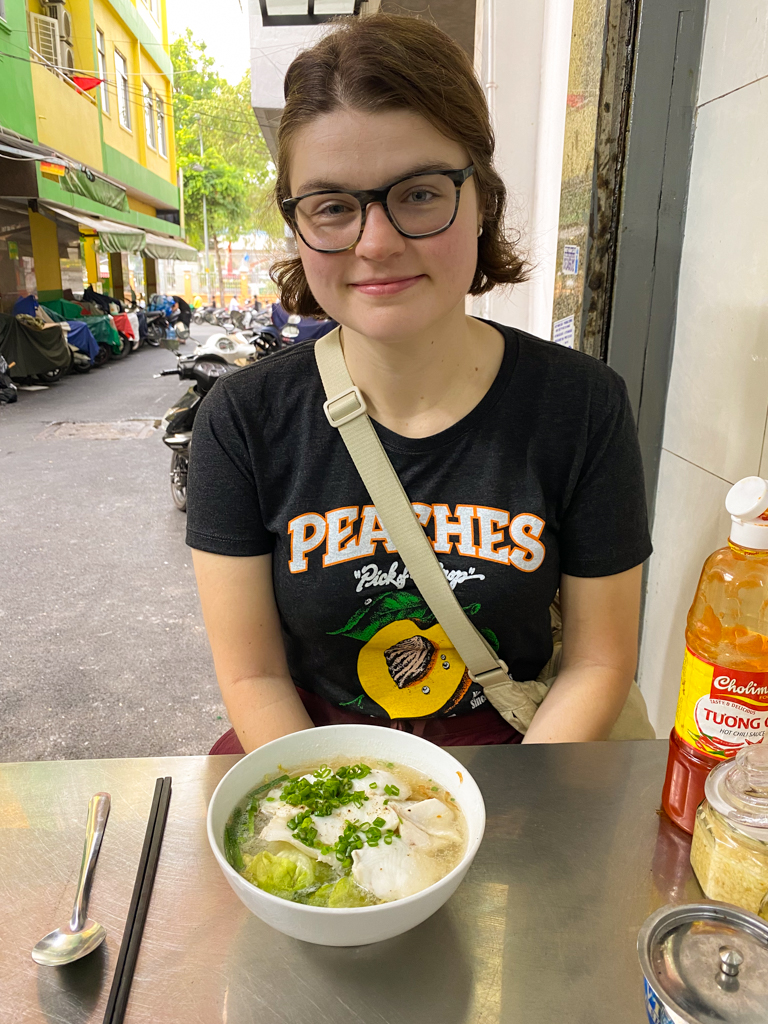
We then walked back towards our accommodation to get some coffee nearby, across the street in fact. Afterwards, we went back to the accommodation, packed up, checked out and ordered a Grab to take us to a bus station. I saw a bus station because there are hundreds of bus station depots across the city, operated by different companies. We chose the bus company, Thảo Châu. We waited 30 minutes or so while observing customers arriving and delivery men dropping off parcels that were no doubt going on the bus with us. Once we got on the bus it was a really fast two-hour bus ride. I’ve never been on a bus that was both early to leave and took way less time than initially predicted. Needless to say, this means the bus ride was slightly terrifying.
Once we got to the bus station in Bến Tre we waited for our taxi. The staff at the bus station were really lovely. They couldn’t really speak English, but they were clearly wondering if were we going to be alright, asking where are we going and who was coming. Eventually, the taxi did arrive and the staff helped us get loaded up in the car. We then drove 30 minutes to our accommodation, Nguyet Que Homestay. Upon arriving we were greeted by a wonderful green, lush, jungly atmosphere. I was immediately struck with how many coconut trees there were on the property.
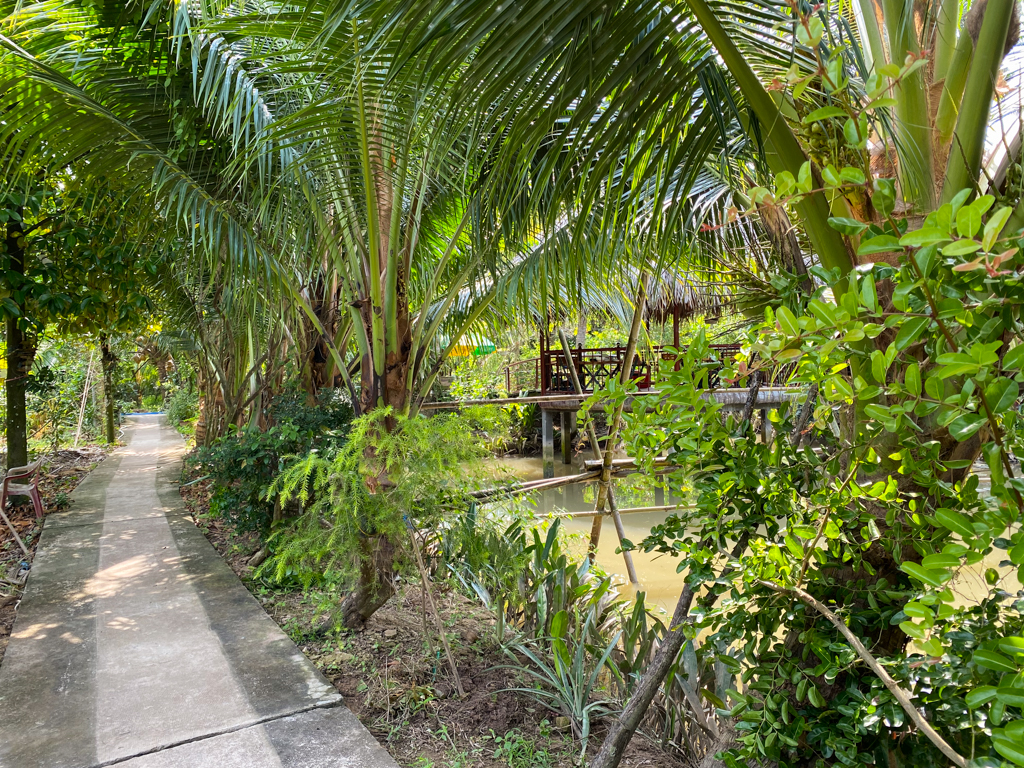 As soon as we checked in we had lunch, made by the host’s wife. The food was incredible! We had all sorts of flavorful and interesting things. Unfortunately, we weren’t told the names of any of the dishes in Vietnamese, though I have some guesses. We had vegetarian fried spring rolls, shrimp salad, fish ball sour soup and another dish with shrimp coated in this amazing, sticky, decadent sweet sauce, which I think is called tôm rim. For dessert, we had a plate of deliciously honey-sweet mango.
As soon as we checked in we had lunch, made by the host’s wife. The food was incredible! We had all sorts of flavorful and interesting things. Unfortunately, we weren’t told the names of any of the dishes in Vietnamese, though I have some guesses. We had vegetarian fried spring rolls, shrimp salad, fish ball sour soup and another dish with shrimp coated in this amazing, sticky, decadent sweet sauce, which I think is called tôm rim. For dessert, we had a plate of deliciously honey-sweet mango.

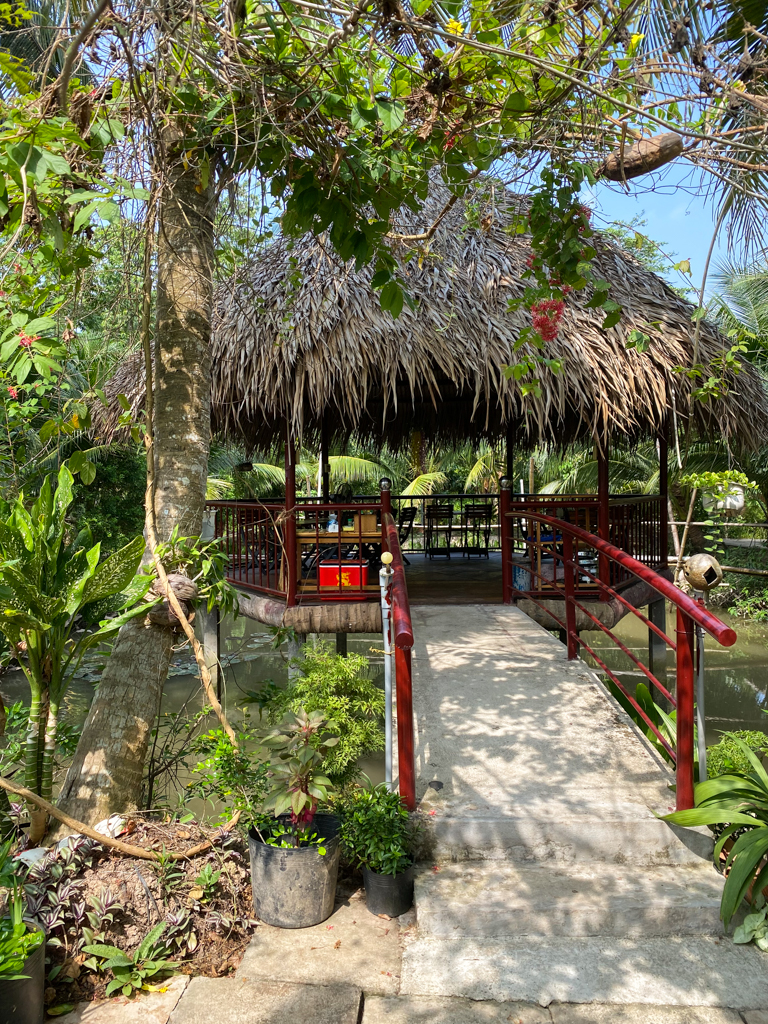
After lunch, we were feeling pretty exhausted, so we went on a little walk around the property and then went to our room to take a nice nap. At 4pm we headed downstairs to meet our tour guide for the sunset boat tour. She walked us to the boat pick-up spot, about a 10-minute walk. The boat finally arrived and we hopped on board.
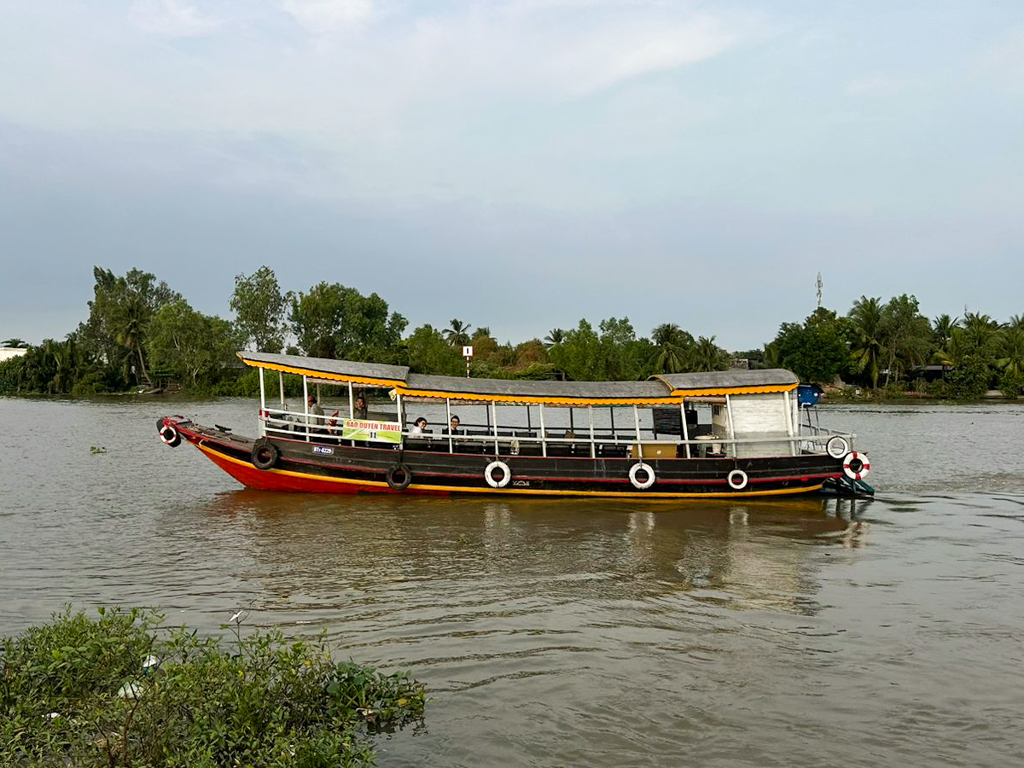 We were served drinks and lots of snacks, including sticky rice cakes. We tried two different types. One is called banh tet chuoi. It’s a sticky rice and banana cake. Sweet-ripened bananas are encased in a layer of sticky rice and black beans and then wrapped in banana leaves. The other type of cake is called bánh chưng. This type of cake is wrapped with banana leaves and filled with savoury yellow mung beans and umami-flavoured fatty pork belly. Upon further research, it seems like these sticky rice cakes are most commonly made and consumed during Tết (the Lunar New Year) as a celebratory treat.
We were served drinks and lots of snacks, including sticky rice cakes. We tried two different types. One is called banh tet chuoi. It’s a sticky rice and banana cake. Sweet-ripened bananas are encased in a layer of sticky rice and black beans and then wrapped in banana leaves. The other type of cake is called bánh chưng. This type of cake is wrapped with banana leaves and filled with savoury yellow mung beans and umami-flavoured fatty pork belly. Upon further research, it seems like these sticky rice cakes are most commonly made and consumed during Tết (the Lunar New Year) as a celebratory treat.
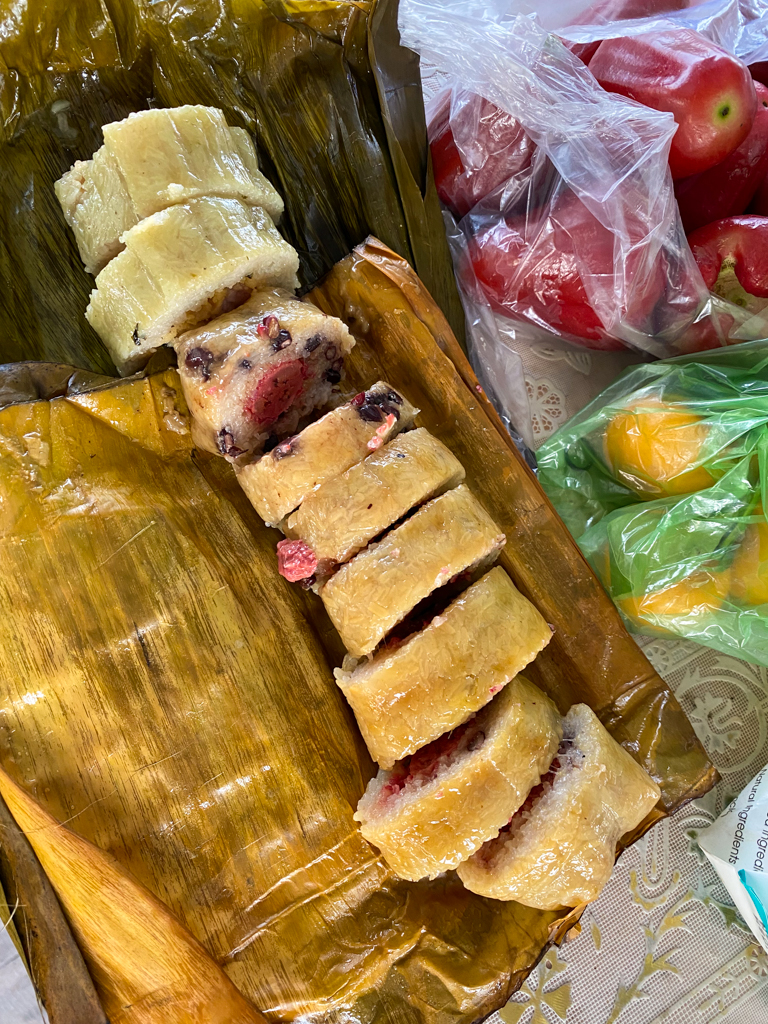
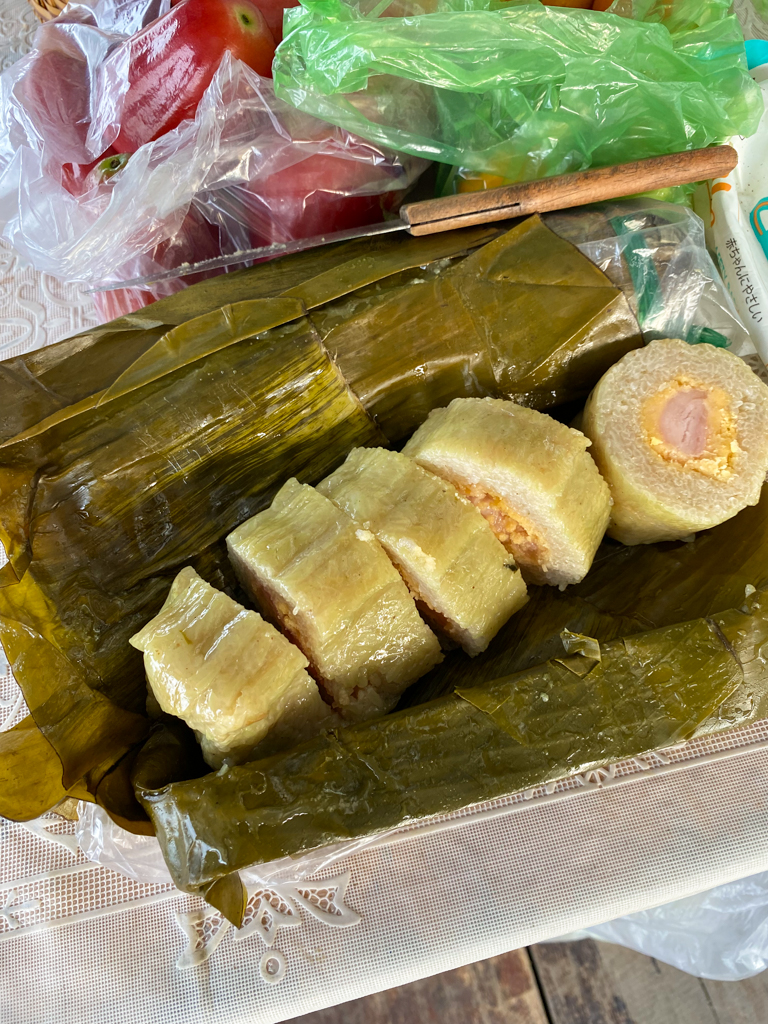
The driver of the boat took us down the Bến Tre River until we reached the Hàm Luông River, a branch of the Mekong River. The Mekong is the world’s twelfth-longest river and the third-longest in Asia. It starts in the Tibetan Plateau and goes through Southwest China, Myanmar, Laos, Thailand, Cambodia, and southern Vietnam. In Vietnam, the main, eastern, branch of the Mekong is called the Tiền River. The distributaries of this branch include the Mỹ Tho River, the Ba Lai River, the Cổ Chiên River and the river we went down, the Hàm Luông River. Once we arrived, we waited until we saw a fiery sunset.
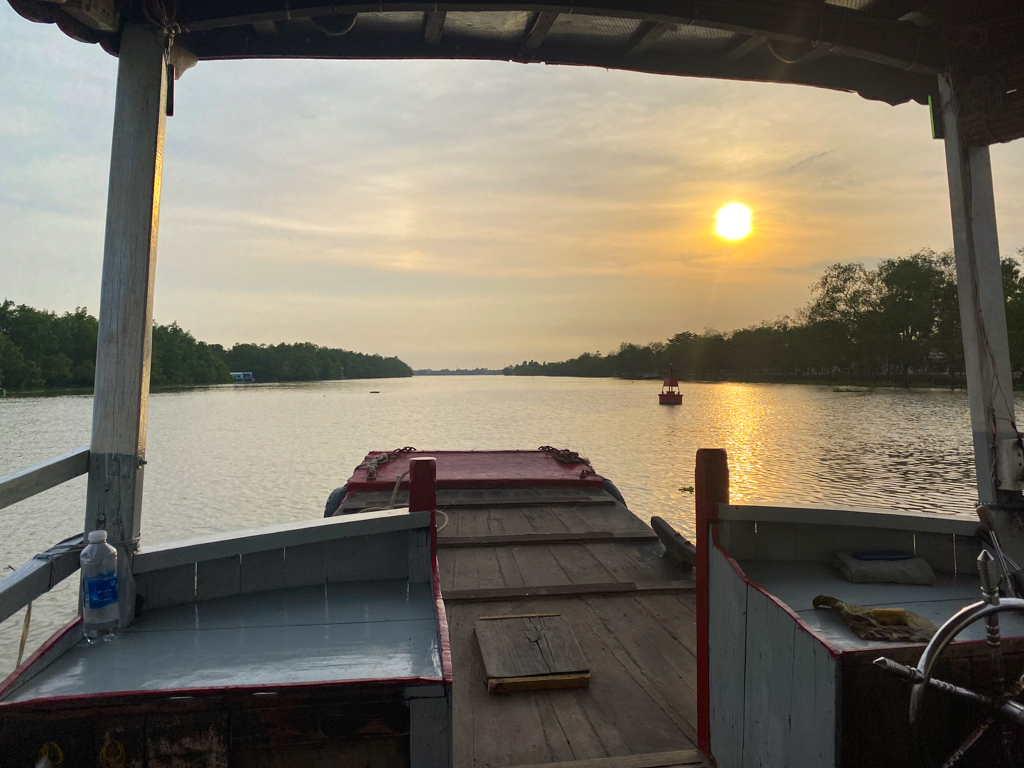
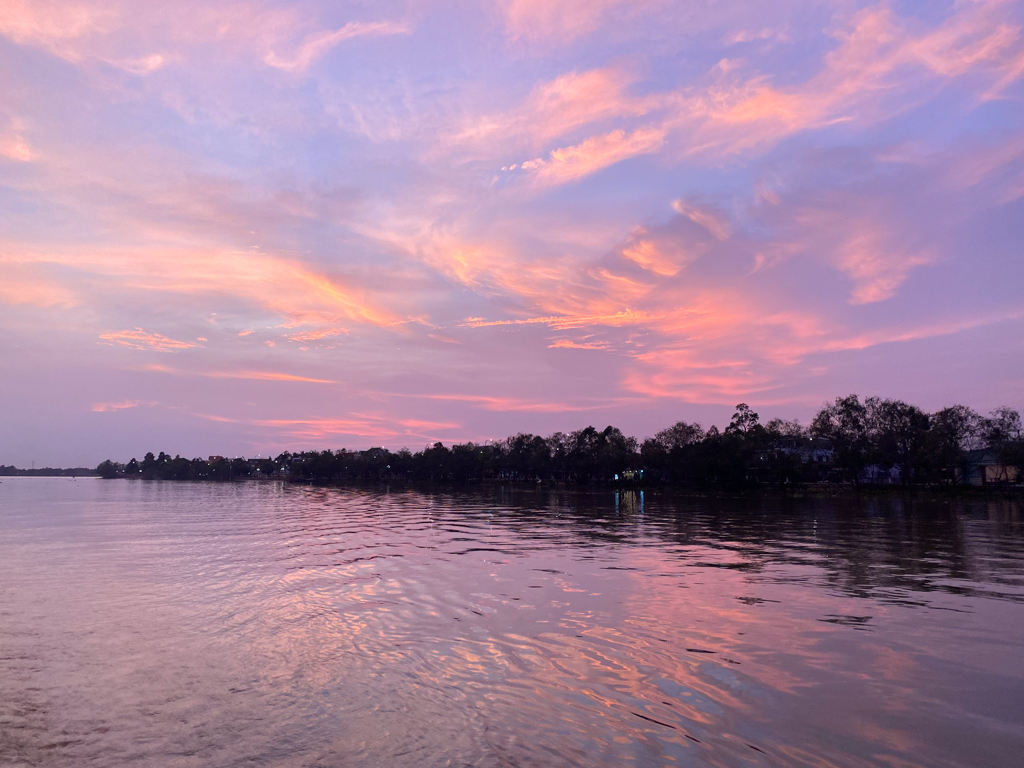
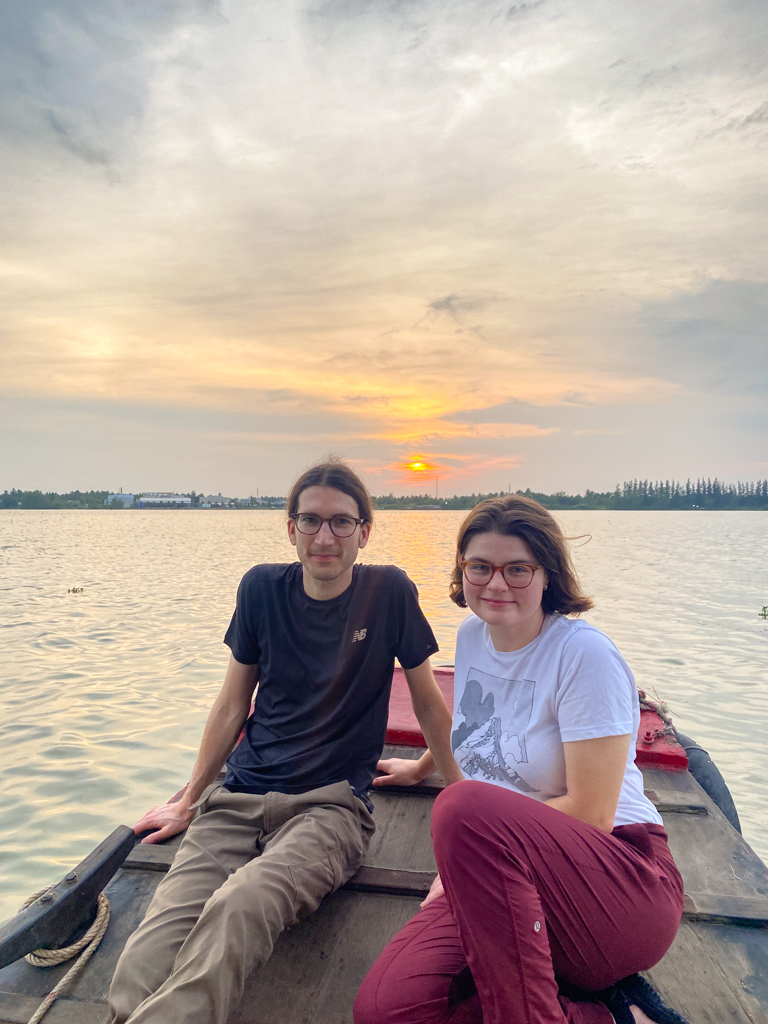
Once the sun went down, we went back up the Bến Tre River to stop at the night market in Bến Tre town itself. It’s full of hundreds of stalls selling fruit, dried goods, clothing, souvenirs and even home goods. We then got back onto the boat and were driven back to the pick-up point.
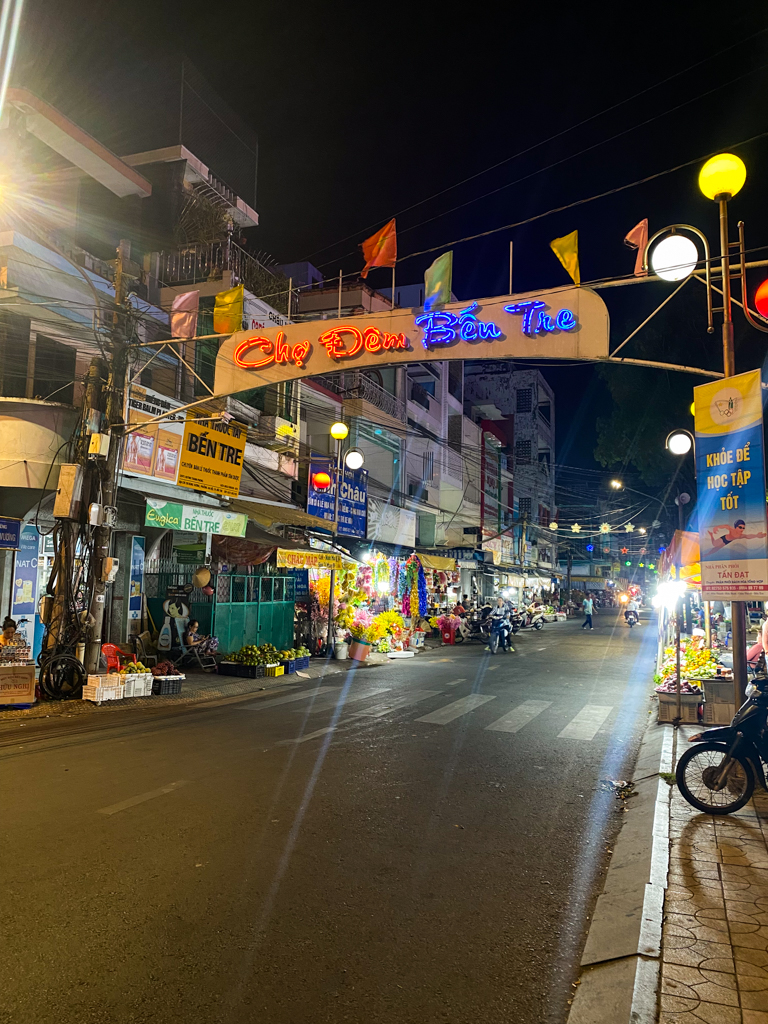
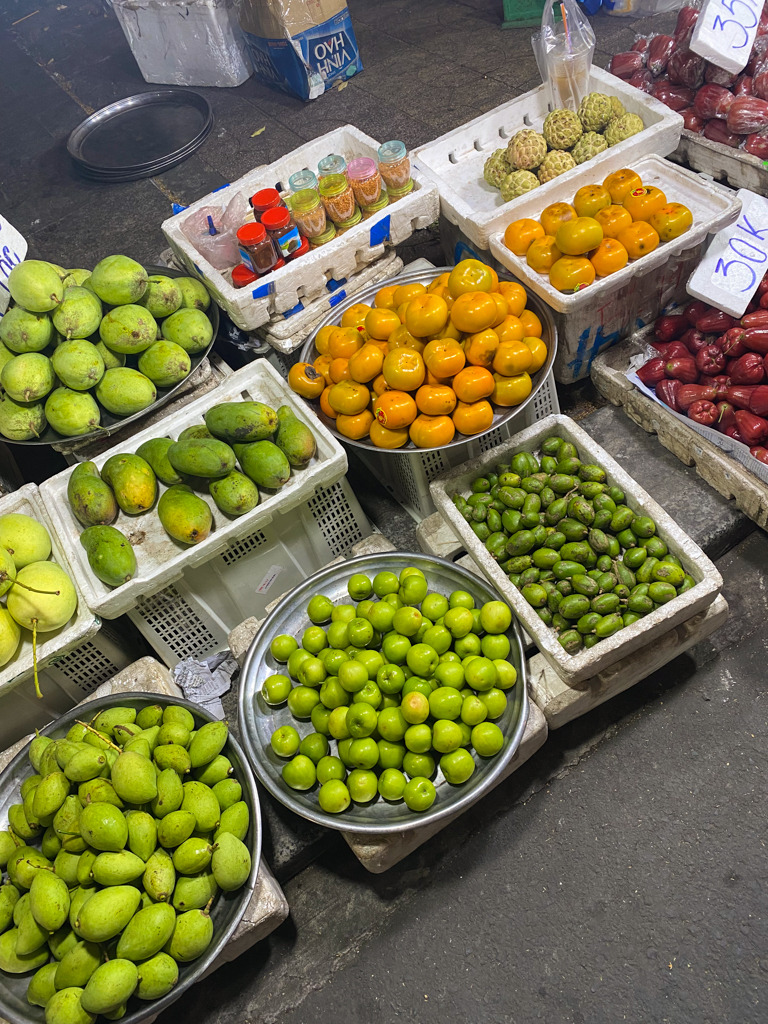
Once we got back to our accommodation it was time for another delicious meal. For dinner, we had green papaya soup with fish balls, squid salad, shrimp stew, and some other sticky delicious dish that I don’t know the name of! We also had red dragonfruit, which I was expecting to be quite bland, but it was deliciously sweet and refreshing.
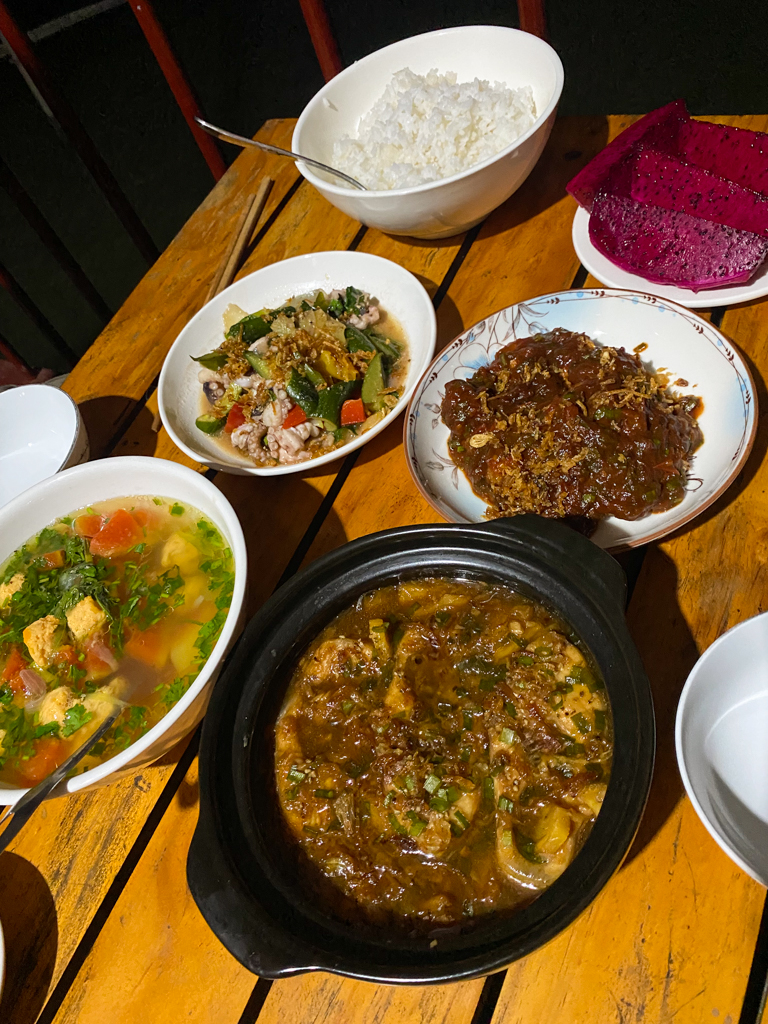 The next morning we woke up and decided to go on a 30-minute bike ride through the village. It was wonderful to explore the village and go through the tiny pathways under the coconut trees.
The next morning we woke up and decided to go on a 30-minute bike ride through the village. It was wonderful to explore the village and go through the tiny pathways under the coconut trees.
We came back, had breakfast, and then took a tuk-tuk to our next boat adventure. We took a small wooden boat through the mangrove of water coconut trees. I can’t quite describe how magical this boat ride was. I saw photos online, sure, but once you’re actually in it, listening to the water stream down and the palm leaves brush each other in the slight breeze, there’s something otherworldly going on.
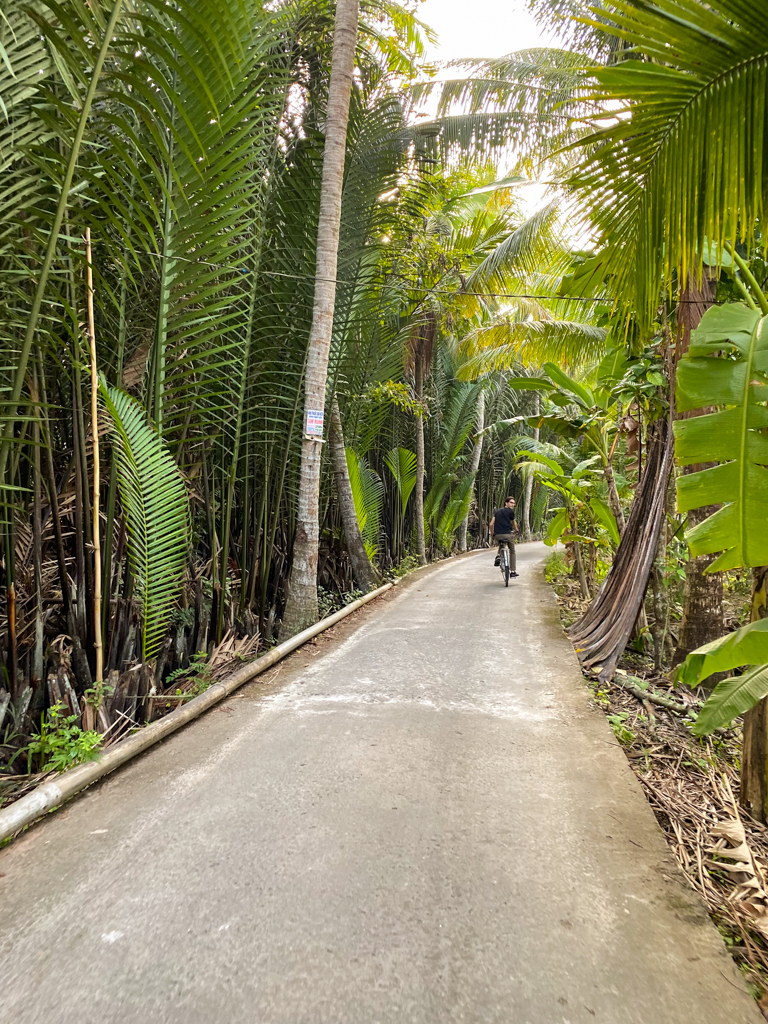

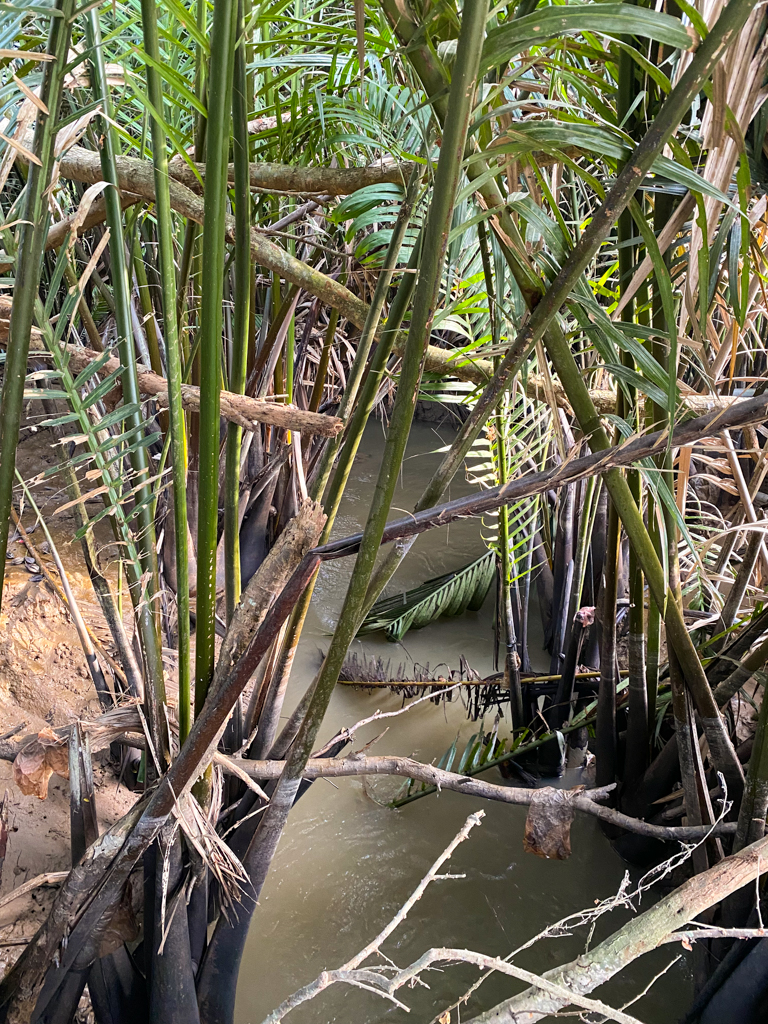
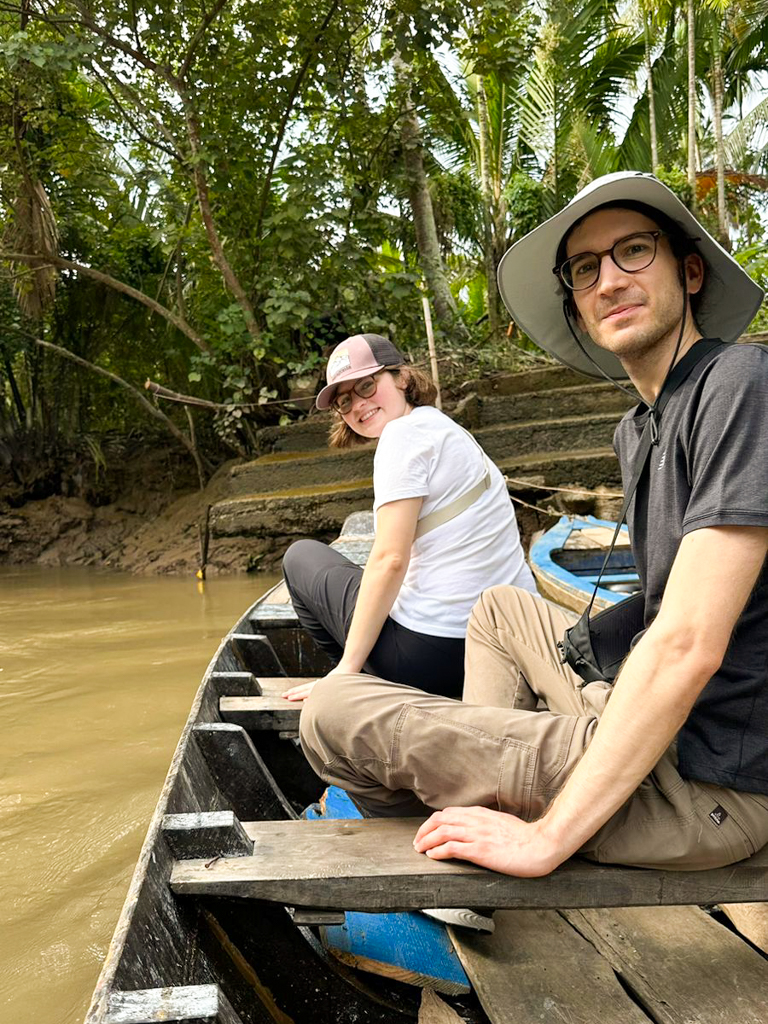
The boatman and our host started to try and find a good water coconut for us to try. They tried a few and said that they weren’t ready yet, though, of course, we didn’t really know what they meant by that. Our host tried cracking open another water coconut and this one was a winner. It’s the strangest fruit. Once you cut it open, there’s a little membrane in the center, that is reminiscent of lychee.
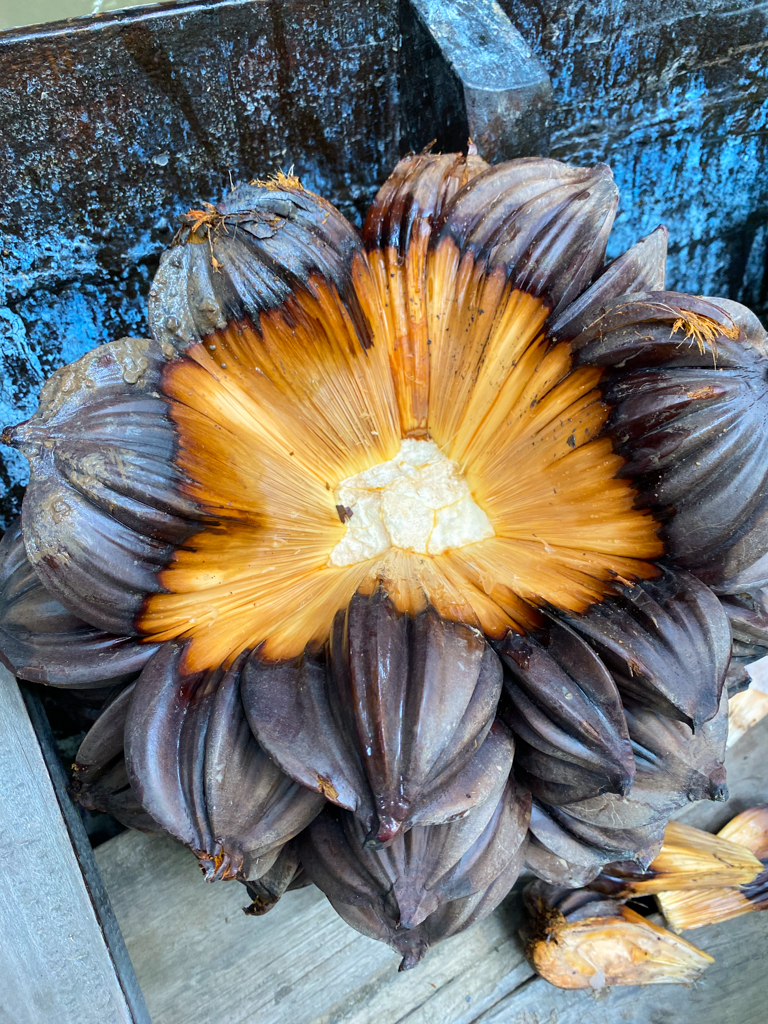
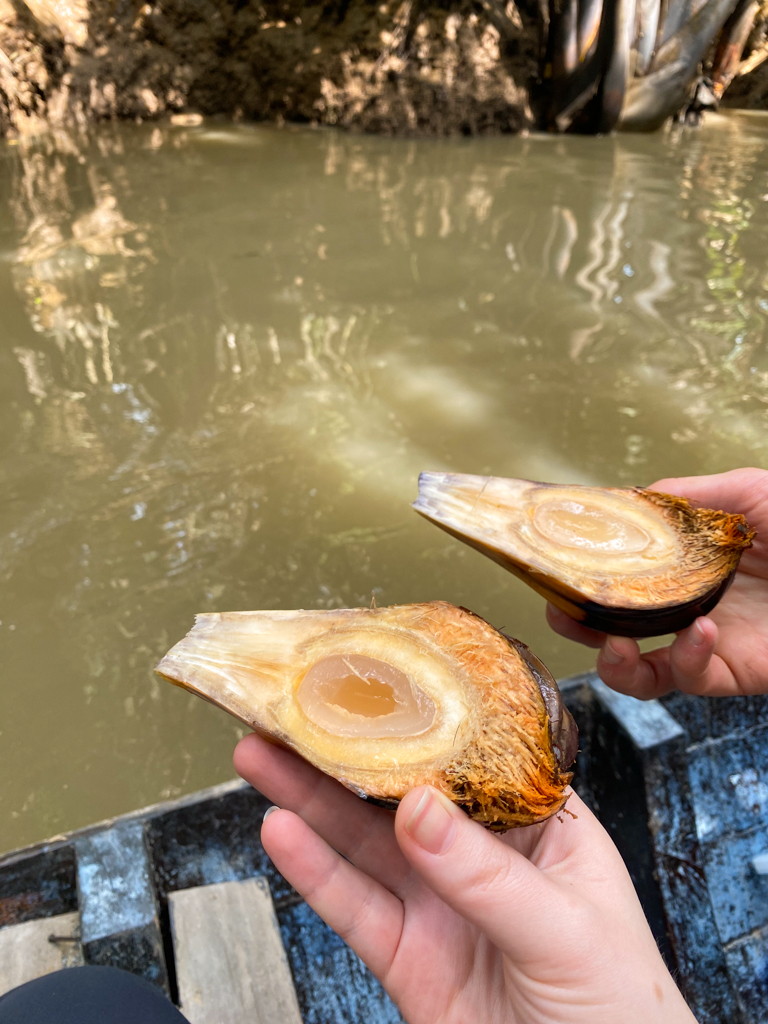
We were driven back to the accommodation and then we promptly showered, packed and checked out. We had one last meal, which we already knew at the moment in time was probably some of the best food we were going to eat in Vietnam.

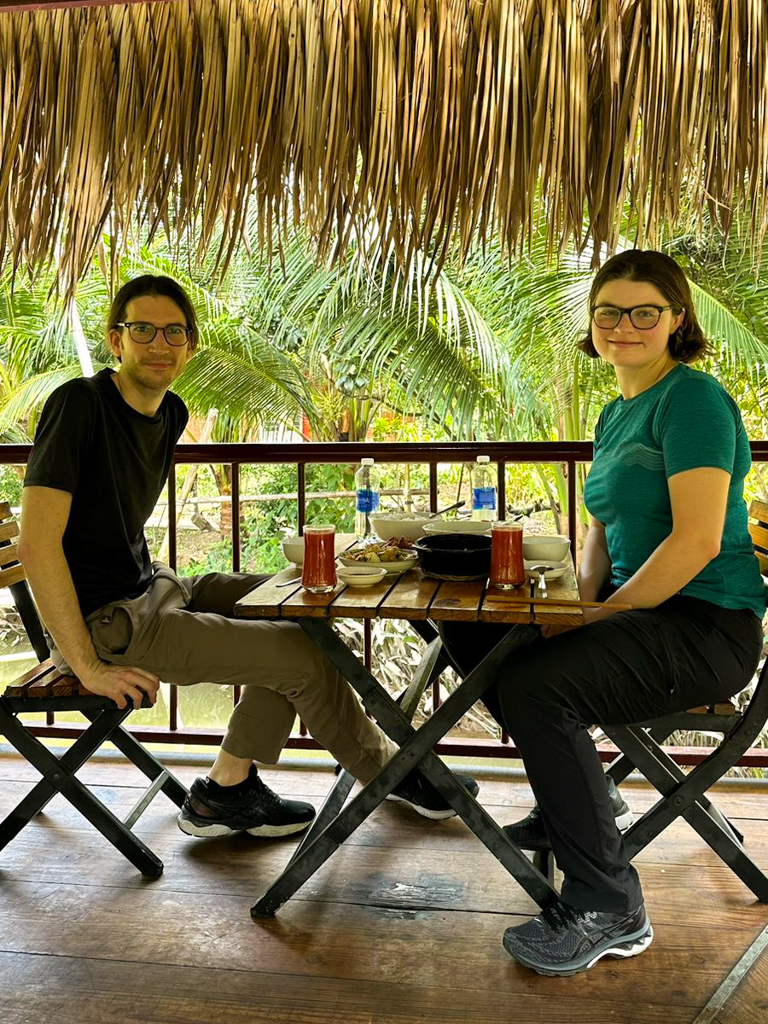
After lunch, we said goodbye to our amazing host, and our driver set on his way to our next stop in the Mekong Delta, Can Tho. Stay tuned for my post on that!
Have you been to the Mekong Delta? Would you visit Ben Tre aka the coconut kingdom of Vietnam?




No Comments